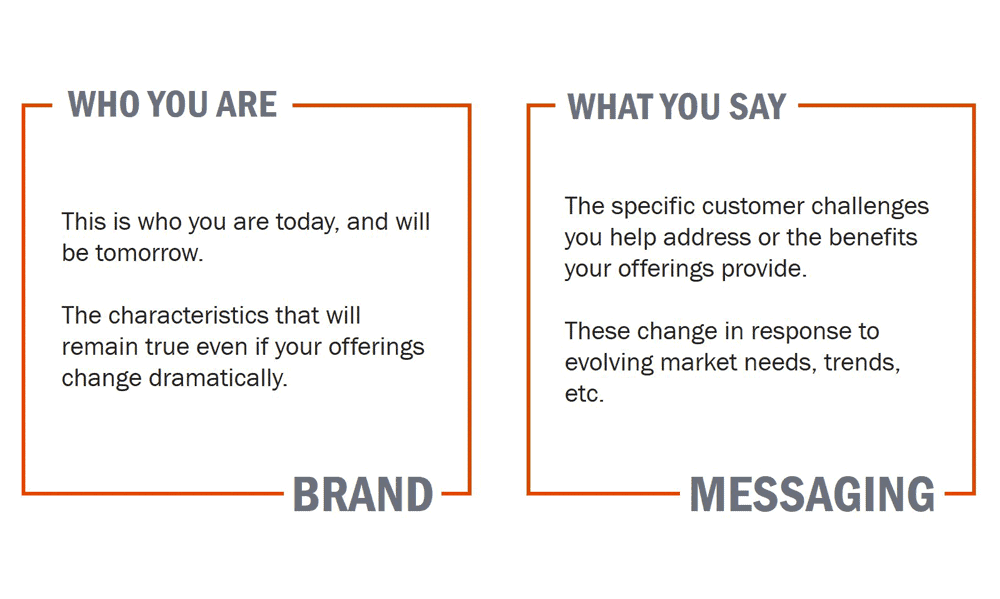How to Design Cohesive Branding That Resonates
Creating a strong, recognisable brand is critical to business success. But a brand is more than just a logo or tagline. Indeed, effective branding requires cohesion – aligning every customer touchpoint to create a unified identity that resonates with your target audience. When adequately executed, cohesive branding can increase revenue, loyalty, and brand value when managed enough. This comprehensive guide examines the components of cohesive branding and provides actionable steps for crafting an impactful brand identity.
Table of Contents
Cohesive Branding: What Is It and Why Does It Matter?

Before diving into implementation, let’s clearly define cohesive branding:
Cohesive branding refers to aligning all visual, verbal, and behavioural brand elements to create consistency across channels and reinforce what the brand stands for.
The goal is to construct a unified brand identity that customers instantly recognise. This is achieved by coordinating colours, messaging, imagery, values, experiences, and more to emit the same “vibe” customers know and love.
Crafting cohesion is crucial because people expect continuity from brands. When each touchpoint tells a different story, it confuses what the company provides and believes in. Without cohesion, brands struggle to form meaningful connections with their audience.
However, when properly executed, cohesive branding has tremendous benefits, including:
- Increased revenue: Cohesive branding makes companies appear more legitimate and trustworthy, encouraging sales.
- Improved loyalty: Customers who recognise and connect with a brand’s identity across channels are likelier to purchase from the company repeatedly.
- Better brand recall: A steady stream of aligned brand messaging improves awareness and memorability.
- Higher brand value: Consistency and recognition drive brand value – core intangible assets that allow companies to command higher prices.
| Type of Brand | % Aided Brand Recall |
| Cohesive Brand | 72% |
| Non-Cohesive Brand | 51% |
Now, let’s explore the critical components of cohesive branding.
The Cornerstones of Cohesive Branding
Constructing a unified brand identity requires carefully coordinating the following elements:
Visual Identity System
A visual identity system includes:
- Logo
- Colour palette
- Typography
- Iconography
- Imagery style
- Graphic elements
Companies emit an instantly recognisable look by creating brand guidelines for visuals and using them across all channels.
Messaging Framework
From taglines to ad campaigns to social media captions, all messaging should align with the brand’s:
- Personality
- Voice
- Tone
- Values
- Positioning
This requires understanding the brand’s ethos and persona to inform every piece of communication.
Experience Delivery
The experiences a brand delivers, whether digitally or in-person, should align with what it promises customers. This includes:
- Product/service quality and consistency
- Content
- Customer service approach
- Store atmospherics
- Packaging
- Signage
If a luxury fashion brand promises premier craftsmanship and exclusivity, every touchpoint should deliver that elevated experience.
When these facets align, brands emit an instantly recognisable identity rooted in visual, verbal, and behavioural consistency. Now, let’s explore best practices for implementation.
Executing Cohesive Branding: 10 Best Practices

A unified brand identity requires coordination across teams, channels, and touchpoints. These best practices set the stage for effective, cohesive branding:
1. Clarify Your Brand Identity
Start by clearly defining your brand and how you want customers to perceive it. Capture its personality, values, positioning, promise to customers and reason for existing in a brand identity statement. This document serves as the north star guiding every branding decision.
2. Create Brand Guidelines
Develop guidelines that dictate how verbal, visual, and behavioural brand elements should be implemented across touchpoints to maintain cohesion. Include specifics for logo usage, messaging framework, imagery style, customer experience parameters, etc. Educate teams on adhering to guidelines in daily work.
3. Foster Cross-Departmental Collaboration
Break down silos between teams to improve alignment on branding efforts. Designers, marketers, product developers and all customer-facing divisions must work synergistically to reinforce branding cohesion. Implement processes for cross-team communication and input regarding creative concepts and campaigns.
4. Map the Customer Journey
Identify every touchpoint customers have with your brand across channels, from ads to store visits. Pinpoint inconsistencies in messaging or experience delivery throughout the journey. Then, improve alignment.
5. Build Employee Brand Understanding
Educate employees on the company’s brand identity and desired customer perception. Ensure they fully grasp brand values, personality and story to relay consistent messaging during customer interactions. Offer branding training to reinforce education continually.
6. Audit Frequently
Routinely audit messaging and experiences across channels and touchpoints – website, product packaging, ads, signage and more – to catch inconsistencies threatening cohesion. Identify areas of misalignment, then correct the course.
7. Keep Brand Elements Flexible
Maintain flexibility in certain branding elements, like taglines and campaign themes, to keep content fresh and engaging across channels. However, ensuring flexibility aligns with foundational brand identities facets like personality and values.
8. Prioritise Consistency in Early Communications
Be remarkably consistent from the outset in early-stage communications so target audiences instantly recognise the brand’s visuals and messaging. Consistency kickstarts memorability. Then, introduce flexible elements over time.
9. Remain Consistent Amid Change
When evolving, expanding or repositioning a brand identity, only alter foundational elements if essential. Otherwise, double down on upholding existing visuals, messaging and experiences to retain and build equity during times of flux.
10. Continually Monitor and Refine
Regularly gather customer feedback, survey brand perceptions, audit messaging and experiences and track branding KPIs. Continually monitor effectiveness, then tweak and enhance the approach to improve cohesion. Uphold this a continual process amid market changes.
Executing cohesive branding requires focus, discipline and collaboration from organisational leaders and team members across departments. But the long-term benefits make the investment well worthwhile.
Maintaining Cohesion As You Grow

For larger, fast-growing companies, preserving a cohesive identity poses added challenges with more moving parts. Here are four proven tactics to maintain alignment at scale:
- Appoint an Owner. Assign an executive “brand champion” responsible for stewarding cohesion.
- Invest in Software. Platforms like Frontify centralise branding and guide usage.
- Regularly Audit. Routinely audit messaging and design adherence across regions and departments.
- Simplify Guidance. Condense standards into straightforward swipe files, logos sheets, etc., that are easy to follow.
While it takes work, the returns from consistent branding are monumental. Prioritising cohesion ultimately fuels scalable business growth.
Quantifying the Value of Cohesive Branding
The proof lies in the numbers. When successfully crafted, cohesive branding delivers unmatched value. Consider these statistics:
- United Airlines saw stock prices increase by 201% over five years after rebranding to realign its identity and experience delivery.
- After Starbucks rolled out enhanced brand guidelines and new employee training to foster cohesion, sales rose 10% in the following quarter.
- According to research, 69% of customers indicate brand consistency across channels strongly influences purchase decisions and brand affinity.
- According to research published in the Journal of Marketing, aligning branding visually leads to an average 23% increase in revenue growth over competitors.
- Effective, cohesive branding increases the likelihood of customers recommending a brand by 33%.
The evidence is abundantly clear. By diligently coordinating brand elements for consistency, companies see monetary returns, customer loyalty boosts, competitive advantages and significant brand equity growth.
| The Benefits of Cohesive Branding |
| Increased revenue |
| Improved customer loyalty |
| Better brand recall and awareness |
| Higher brand value |
| Competitive differentiation |
In Summary: Why “Cohesive Branding” Matters
Constructing a reliable, recognisable identity through cohesive branding requires immense coordination but delivers game-changing rewards. Unified messaging and experiences across every customer touchpoint boost sales, memorability, affinity and equity.
While branding consistency takes concerted effort, properly implementing the visual, verbal and experiential facets explored in this guide sets companies up for current and long-term success. When customers instantly know what a brand stands for, they are far more likely to engage with it continuously across channels and contexts over competitors.
Brand loyalty and value are built through consistency in all brand communications and interactions. While the branding landscape grows more complex with new technologies and channels, maintaining alignment on core identity elements is critical.
Looking ahead, leaders must champion cross-functional coordination, regularly audit for inconsistencies, incentivise teams to uphold brand guidelines and invest in customer experience excellence across digital and physical touchpoints.
The path to memorable, recognisable branding with the power to drive accurate business results is paved through cohesion. Unified verbal, visual and behavioural messaging has stood the test of time for enduring, iconic brands. Companies of all sizes and industries can cut through the noise by diligently coordinating elements for consistency to form meaningful connections with their audiences.
When brand elements interlock flawlessly like puzzle pieces, the complete picture is clearly in customers’ minds. Craft that picture intentionally by fostering “cohesive branding” at every touchpoint.
Now, let’s explore answers to common brand consistency questions:
FAQs:
Why is cohesive branding more critical than ever in the digital age?
Today’s branding landscape is more complex than ever, with customers interacting with brands across more online and offline touchpoints. Consistency is crucial for recognition and resonance amid fractured attention. Aligned identity elements also increase trust and credibility to drive conversions across channels.
How often should companies audit branding elements?
Formal brand audits should occur quarterly to assess visual, verbal and behavioural consistency. Monthly informal channel-specific touchpoint audits like analysing the latest social content and ad alignment should also happen. Continual auditing catches issues early.
How much flexibility is healthy in a brand identity system?
Brand foundations like personality, voice and logo should remain fixed. Campaign themes and taglines can flex to enable relevance and creativity. Straying too far from core visual and tonal facets confuses. Use fixed brand pillars to guide flexibility while preventing complete rebrands.
What are signs that poor internal brand alignment hurts customer perceptions?
Inconsistent experiences, fractured messaging across touchpoints and misalignment with brand promises confuse audiences. Signs of poor alignment include declining conversion rates, reduced engagement on branded posts, brand image dilution and drops in repurchase rates or customer satisfaction scores. Proactively audit and listen to customers to catch missteps early.
Should rebrands completely overhaul existing brand identities?
Major rebrands with entirely new names, branding and identities are rare and risky unless a company or product changes fundamentally. More often, rebrands simply refine logos, modernise visuals or reinforce positioning. With rebrands, consistency with some existing familiar identifiers is advisable for retaining current customers during transitions.
